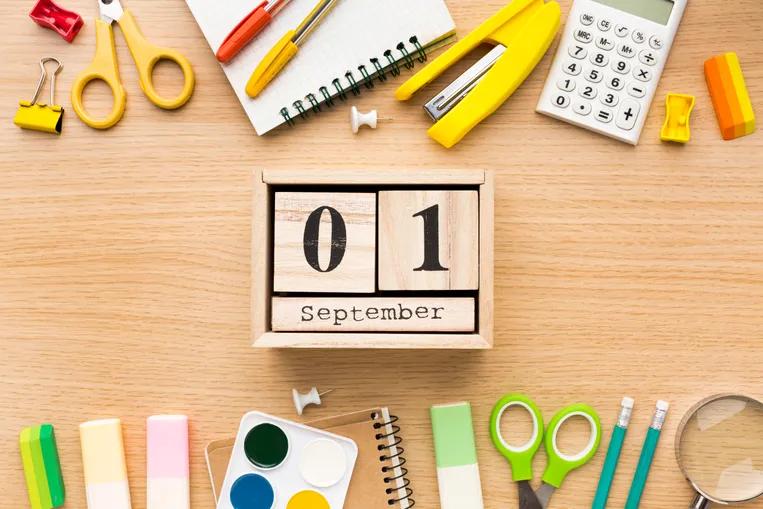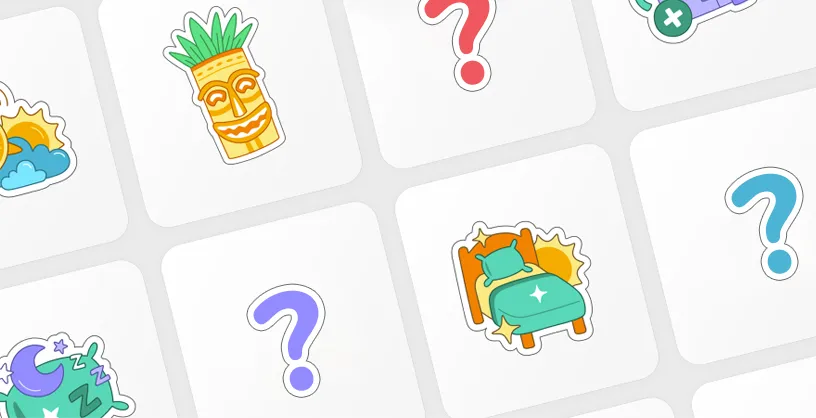
It can often feel as if there just aren't enough hours in a day. Kids have a lot on their plates: balancing school, homework, extracurriculars, hobbies, and finding time for friends. Without effective time management tools, managing their daily lives can become overwhelming. This can result in homework being handed in late, test dates forgotten, or assignments incomplete.
A bit of good news is that effective time management is a skill you can learn and not a personality trait you inherit. With the use of calendars and daily schedules your kid can find order in the chaos.
We've researched the latest trends in time management and compiled practical tips for setting up your kid's calendar and daily schedule. Implementing these solutions may require some time, however, in an effort to accommodate your busy schedule Coachbit runs a Calendar Module as part of our coaching program. This module follows a step-by-step guide to help your child set up their calendar.
Setting Up Your Kids Calendar
A calendar should function as a place where all upcoming events, deadlines, and activities are recorded. Overall, your calendar serves as a base for your time management strategies, and subsequently the ways in which you and your child's calendars are set up are very important!
A calendar can act as a visual representation of your task load. The use of color coding in your calendar setup can help with the visualization of the tasks that lay ahead in weeks to come. For instance, you could color code your kid's extracurriculars (red), school deadlines (blue), and play dates (green). For kids with ADHD, the use of color blocking enables them to visualize time (an abstract concept), and allows their brains to process the information faster. This can improve task completion!
A calendar alone is not a sufficient time management tool. One of the biggest challenges is defining what you are going to work on day-to-day to meet your deadline or hand in that assignment in on time. Procrastination becomes enemy number one. Therefore, a system of accountability and daily organization becomes vital in time management.
Implementing a Daily Schedule for Kids
Once your kids's calendar is filled with homework deadlines, events, and activities for the month, the use of a daily schedule can help them create a routine and ensure they are using their time wisely to adhere to their commitments. The following tips are recommended when setting up a daily schedule that keeps your kid accountable and consistent. The aim is to prevent their schedule from becoming a piece of paper scrunched up at the bottom of their school bag.
4 Tips for Creating a Daily Schedule With Your Kid
- Make their daily schedule visible and accessible.
There are various ways this can be accomplished. For instance, on the fridge door, next to their desk, typed out in their cell phone. Visibility and accessibility will promote accountability and improve consistency. Once again, using a color coding system will improve the visual appeal, and make their daily task load clear. Another tip is to make sure, if your kid's calendar is handwritten, that it is neat and legible!
- Their daily schedule should be time blocked.
Your kid's daily routine and tasks should be scheduled to be completed at specific times e.g., Math Homework from 7 pm to 8 pm. The reason for this is to avoid overestimating or underestimating the time available in the day to complete their scheduled tasks. You don't want to over or underload your kid's schedule. Initially, it might be difficult to estimate how much time certain tasks require, but that's okay. Set a timer and note how long your child takes to complete a task!
- Make your kid's daily schedule a checklist.
Researchers found that participants were more motivated to follow and continue to use their daily schedules because of the sense of accomplishment they felt from checking items off their daily schedule. If this isn't sufficient motivation for your kid, implementing some form of a reward system may be useful. For instance, adhering to their schedule for a week earns them an extra 20 minutes of TV time. Their reward can be set at your own discretion.
- Include time for fun and relaxation
It is important to create the separation between time spent on focusing and time spent on recuperating. Cal Newport, author of How to Become a Straight A Student, introduces the term "pseudo-working", which refers to seeming busy but in reality, taking 5 hours to complete a 2-hour task. This behavior can occur when tasks aren't time blocked realistically and regular breaks and relaxation time are not integrated into one's schedule. Your child needs both. Cal Newport shares that productivity can be maintained for 40 minutes to 1 hour and that regular 5-minute breaks in between helps maintain focus when needed. He also notes the need for longer breaks such as meal times and fun activities (sports, art, Lego etc.). Therefore, when working with your kid to schedule their day, try to balance focus and fun!
Final Thoughts
Time management skills can often be mistaken as something you either inherently possess or lack. This is untrue. Yes, some people are naturally more organized. But managing your time and deadlines efficiently is something we can all learn and excel at. This article focused on tips for you and your family to set up your calendars and create daily schedules to stay on top of your busy lives. Please note that our coaches at Coachbit are ready to help your kid in this process of consolidating their time management skills and handing in those homework assignments on time! We are currently running a Calendar and Timeboxing Course, and our students' results speak for themselves!
Recommended Resources:
Less is More: Exploring Support for Time Management Planning
Cal Newport, How to become a Straight-A Student: The Unconventional Strategies Real College Students Use to Score High While Studying Less
Occupational performance goals and outcomes of time-related interventions for children with ADHD.
How many core habits and skills is your child missing?
Take our short quiz and find out.
Take our quiz